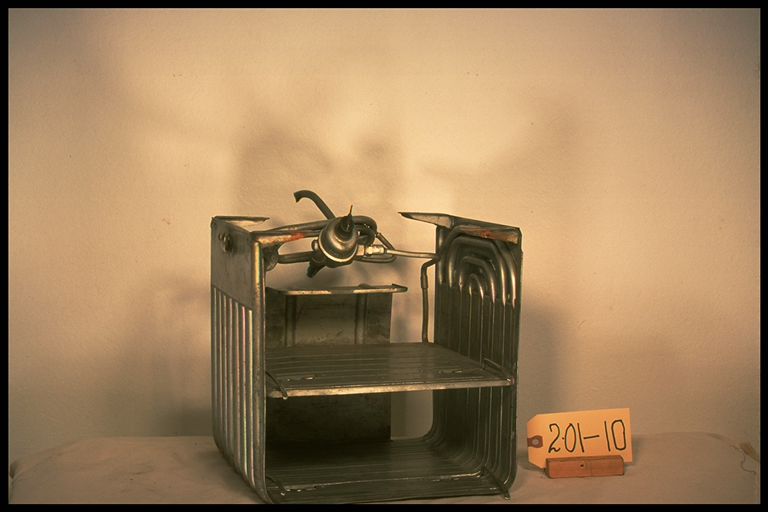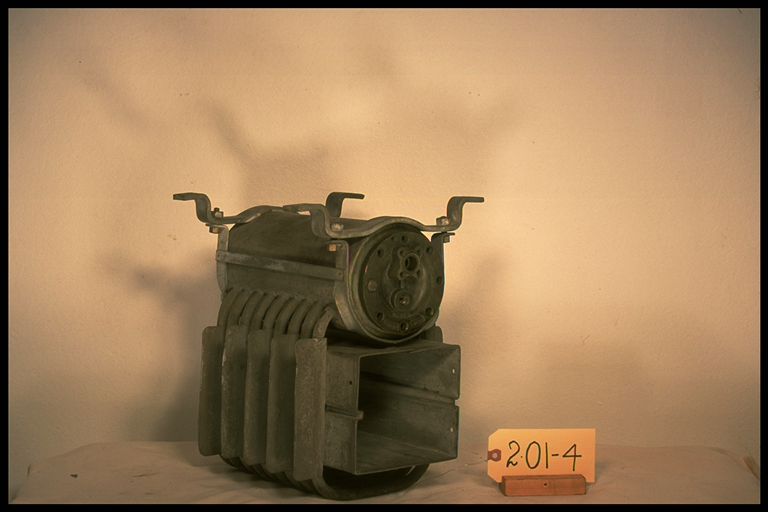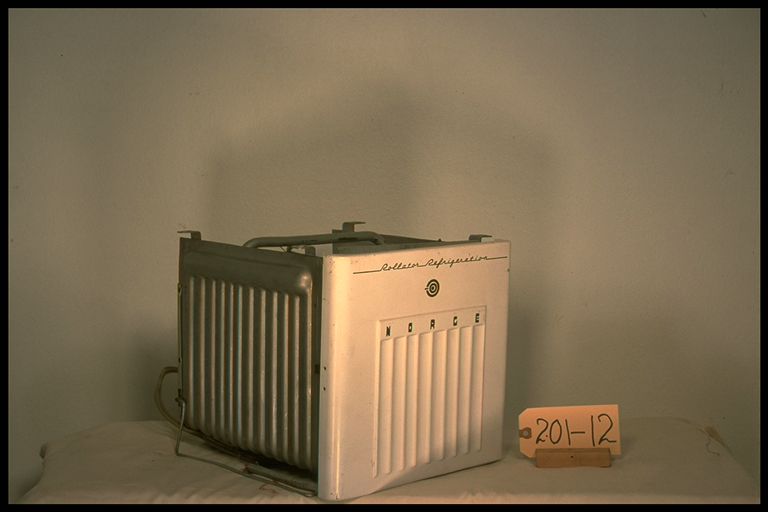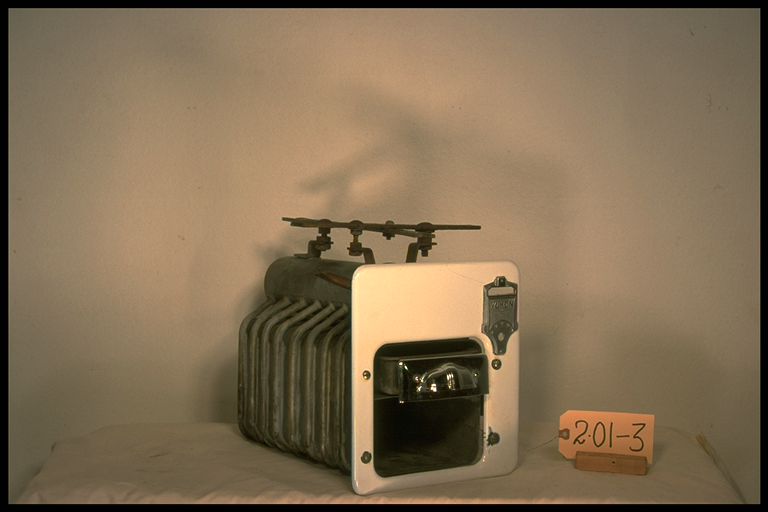2.01-10: 1940 Household Refrigerator Cooling Unit

| HHCC Accession No. 2003.018 | HHCC Classification Code: 2.01-10 |
|---|
Description:
The Canadian refrigeration industry was moving beyond the concept of a refrigerant evaporator as ‘ice maker’ (see item 011), to a cooling unit designed for frozen foods. Using advanced materials engineering for the period, this specimen is fabricated in stainless steel, with high conductivity, rolled and formed refrigerant passages and equipped with an automatic expansion valve, 1940.
Group:
2.01 Refrigerating and Air Conditioning Evaporators - Household
Make:
Unknown, possibly Kelvinator
Manufacturer:
Unknown, possibly Kelvinator of Canada, London Ont.
Model:
Serial No.:
Size:
11x 11x 11’h
Weight:
11 lbs
Circa:
1940
Rating:
Exhibit, demonstration, education and research quality
Patent Date/Number:
Provenance:
From York County (York Region) Ontario, once a rich agricultural hinterlands, attracting early settlement in the last years of the 18th century. Located on the north slopes of the Oak Ridges Moraine, within 20 miles of Toronto, the County would also attract early ex-urban development, to be come a wealthy market place for the emerging household and consumer technologies of the early and mid 20th century.
This artifact was discovered in the 1950’s in the used stock of T. H. Oliver, Refrigeration and Electric Sales and Service, Aurora, Ontario, an early worker in the field of agricultural, commercial and consumer technology.
Type and Design:
The Canadian refrigeration industry was moving beyond the troublesome fabrication of refrigerant evaporators in formed and rolled steel sheet, in order to form refrigerant passages. Here high conductivity stainless steel was used. It offered high heat transfer to meet new performance standards and consumer interests in larger cooling units to accommodate packaged frozen foods now appearing in some areas.
Construction:
Material:
Special Features:
Built in mechanical lifters to release ice cube trays and frozen food packages
Accessories:
Detroit Lubricator automatic expansion valve Model #672, Serial 1959314
Capacities:
Performance Characteristics:
Operation:
Control and Regulation:
Targeted Market Segment:
Consumer Acceptance:
Merchandising:
Market Price:
Technological Significance:
The industry was moving rapidly to more thermodynamically and mechanically efficient refrigerating systems, with the development of non-noxious, refrigerants, and hermetically sealed refrigeration systems and a new generation of smaller less trouble prone flow controls ‘ represented here by the automatic expansion valve (See artifact Group 3.00) .
Industrial Significance:
The Canadian refrigeration industry was continuing to invest heavily in new materials and manufacturing technology to meet the market potential of the period. Much of the design and engineering development of the time was both facilitated and accelerated by the research of wartime years, as well as being constrained by the shortages of materials and skilled labour.
Socio-economic Significance:
Socio-cultural Significance:
Donor:
G. Leslie Oliver, The T. H. Oliver HVACR Collection







